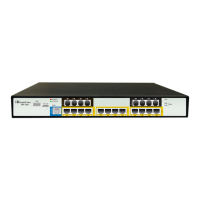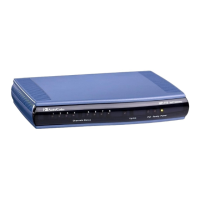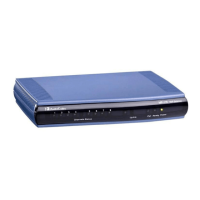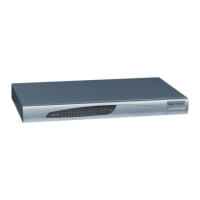SIP User's Manual 434 Document #: LTRT-12801
MP-500 MSBG
Parameter Description
Web/EMS: RFC 2833 TX Payload
Type
[RFC2833TxPayloadType]
N/A. Use the ini file parameter RFC2833PayloadType
instead.
Web/EMS: RFC 2833 RX Payload
Type
[RFC2833RxPayloadType]
N/A. Use the ini file parameter RFC2833PayloadType
instead.
Web: RTP Base UDP Port
EMS: Base UDP Port
[BaseUDPport]
Lower boundary of UDP port used for RTP, RTCP (RTP
port + 1) and T.38 (RTP port + 2). The upper boundary is
the Base UDP Port + 10 * (number of device's channels).
The range of possible UDP ports is 6,000 to 64,000. The
default base UDP port is 6000.
For example: If the Base UDP Port is set to 6000 (default)
then:
1) The first channel uses the following ports RTP 6000,
RTCP 6001, and T.38 6002, 2) the second channel uses
RTP 6010, RTCP 6011, and T.38 6012, etc.
Notes:
If RTP Base UDP Port is not a factor of 10, the following
message is generated: 'invalid local RTP port'.
For detailed information on the default RTP/RTCP/T.38
port allocation, refer to the Product Reference Manual.
For this parameter to take effect, a device reset is
required.
[EnableDetectRemoteMACChange]
Changes the RTP packets according to the MAC address
of received RTP packets and according to Gratuitous
Address Resolution Protocol (GARP) messages.
[0] = Nothing is changed.
[1] = If the device receives RTP packets with a different
source MAC address (than the MAC address of the
transmitted RTP packets), then it sends RTP packets to
this MAC address and removes this IP entry from the
device's ARP cache table.
[2] = The device uses the received GARP packets to
change the MAC address of the transmitted RTP
packets (default).
[3] = Options 1 and 2 are used.
Note: For this parameter to take effect, a device reset is
required.
EMS: No Op Enable
[NoOpEnable]
Enables or disables the transmission of RTP or T.38 No-Op
packets.
[0] = Disable (default)
[1] = Enable
This mechanism ensures that the NAT binding remains
open during RTP or T.38 silence periods.

